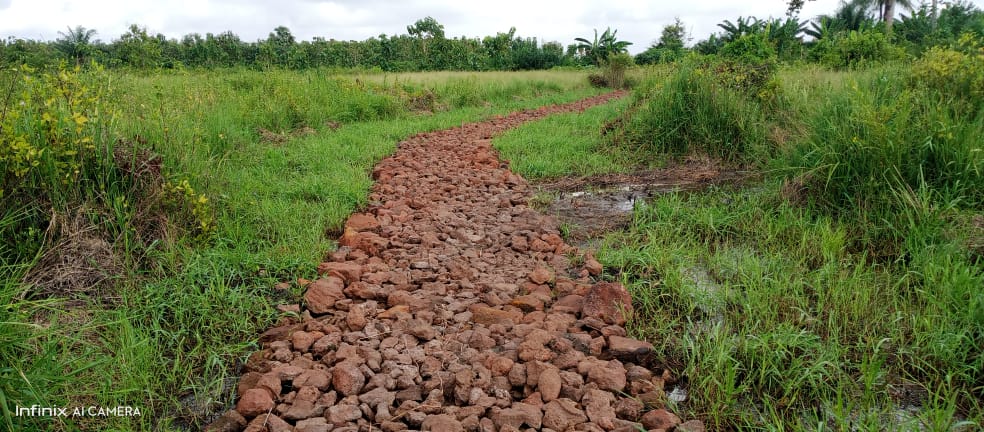Benin – Erosion on surrounding slopes causes continuous siltation of Lake Toho and the lower part of the valley of Houin. When there is heavy rainfall, the water can no longer be sufficiently absorbed. The result: flooding and the need for action.
In recent years we have already been active around Lake Toho. A water committee was set up and an action plan was immediately implemented. An important point of attention was this lake. The lake is becoming increasingly filled with sediments from the smaller catchments around it.
In 2021, Join For Water conducted research into this problem and determined several actions together with the residents. The aim is to prevent the flow of stones and soil to the lake and the lower parts of the valleys. The valley of Houin – in the Lokossa district – is listed as a priority to tackle.
This valley has quite steep slopes where erosion is intense. As a result, the village of Houin located in the lower part of the valley is increasingly exposed to flooding. This is because when there is heavy rainfall, the water can no longer be stored. Every year the village is hit by several floods. We made an agreement with the village chiefs to carry out a few works:
- removal of the sediment layer in the lower part of the valley near the village and near the local bridge, which is largely clogged and makes it difficult for the water to drain away;
- the construction of embankments to provide protection against flooding; the embankments are made with the removed stones and earth; plantings stabilize the whole;
- the construction of a filter dyke upstream of the village to limit the influx of water and sediments through runoff.
All inhabitants participate
With the support of the Flemish Partnership Water for Development (Flemish Government) we could realize :
- protection of people and goods against flooding
- control of sediments and water flows
- diversification of biological habitats typical of the lowlands.
The inhabitants had their say in the choice of the sites and the type of interventions. Everyone was also involved in mobilizing people to participate in the work.
The inhabitants of Houin are very satisfied with these works, as the difference is obvious.

